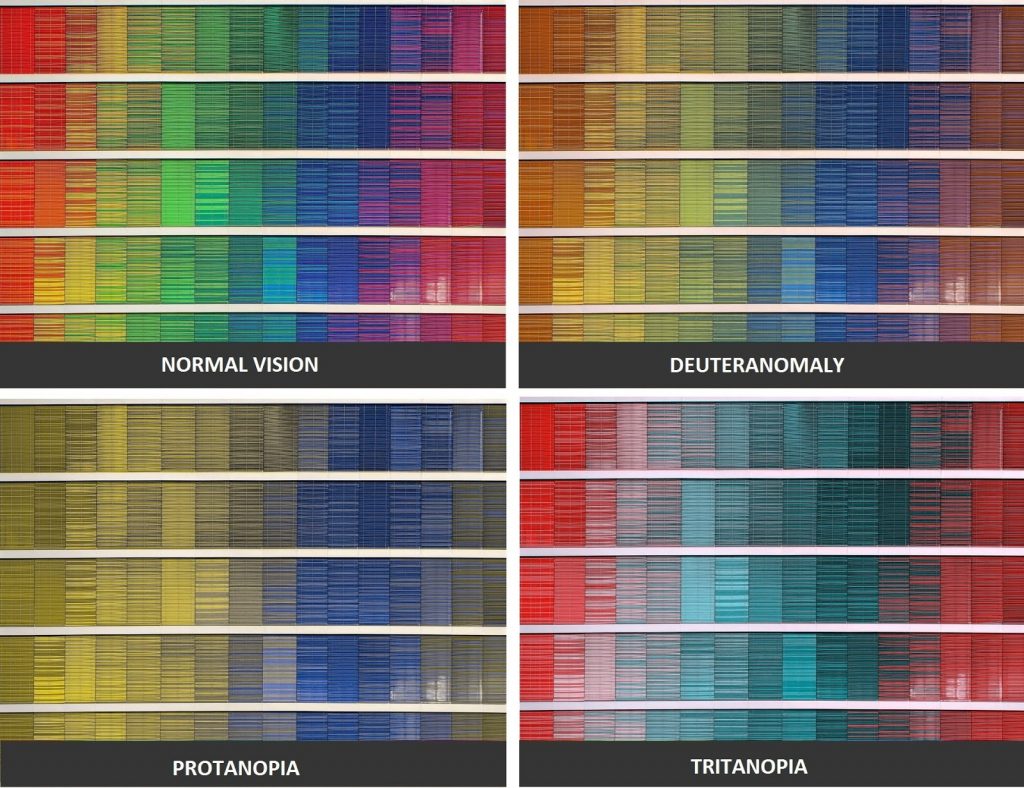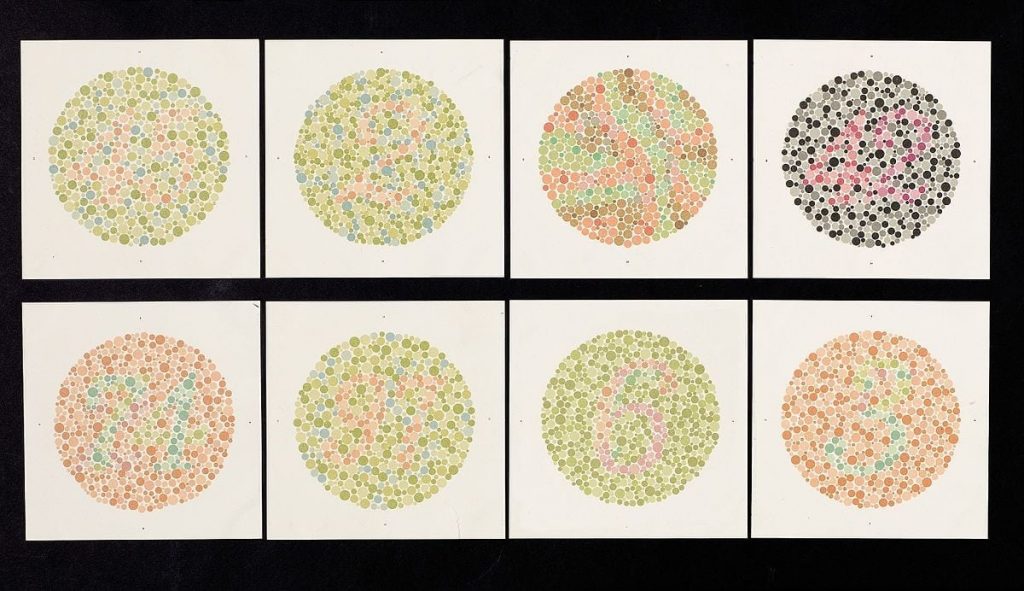Shinobu Ishihara and his Colourblind Tests
Shinobu Ishihara studied at the Imperial University of Tokyo with a military scholarship. After graduating in 1905, he would join the army as a military physician, but also served as a surgeon. In 1908, he would return to study ophthalmology (The study of eye disorders). The would further his education with the likes of Wolfgang Stock, Karl Theodor Paul Axenfeld, and Carl von Hess. While tending to his patients, he was also conduction “battlefield ophthalmology” to select distinguished soldiers.
This lead him to screen tests on recruits to detect irregularity in colour vision. Thus, the Ishihara Tests were developed.
(The first Ishihara Test plates were made in Hiragana in Watercolour)
The Ishihara Test, or Pseudoisochromatic plates, were published in 1917 and is the most popular colourblind test still used to this day. The plates consist of different coloured dots, with a symbol made of dots inside them, that are rendered in colours specific to different types of colour vision deficiencies.
Knowing that our eyes operate on rods, low-light photoreceptors, and cones, day-light and colour photoreceptors, we can categorize colour vision deficiencies.
(We have 3 types of cones. L-Cones (red), M-Cones (green), and S-Cones (blue))
- Monochromatism: Where one type of cone or no types of cones are available.
- Dichromatism: Only two cone types and a third completely missing.
- Anomalous Trichromatism: All three types of cones are available with varying sensitivities, resulting in a reduced colour spectrum.
Dichromatism and Anomalous Trichromatism can be further categorized.
- Protanopia/Protanomaly: Missing and/or malfunctioning L-cones (red)
- Deuteranopia/Deuteranomaly: Missing and/or malfunctioning M-cones (green).
- Tritanopia/Tritanomaly: Missing and/or malfunctioning S-cones (blue).

Ishihara tests are divided into many different plates:
- Demonstration Design: All types of vision are able to see the symbol.
- Vanishing Design: Only people with good colour vision will see the symbol. Colourblind people will not see anything.
- Transformation Design: People with colourblindness will see a different symbol than people with good colour vision.
- Hidden Digit Design: Only people with colourblindness will see a symbol. Good colour vision people will not see anything.
- Classification Design: Used to differentiate between red (protan) and green deutan) colour deficiencies.

Sources
- https://www.color-blindness.com/2010/03/23/color-blindness-tests/
- https://www.color-blindness.com/types-of-color-blindness/
- http://www.eyemagazine.com/feature/article/ishihara
- http://www.dfisica.ubi.pt/~hgil/p.v.2/Ishihara/Ishihara.24.Plate.TEST.Book.pdf
- http://www.whonamedit.com/doctor.cfm/2765.html
- https://www.color-blindness.com/types-of-color-blindness/
- https://biodifferences.com/difference-between-rods-and-cones.html
